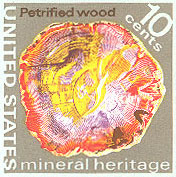
|
History of Geology |

Born: 4 Oct. 973, near Khwarzim, Uzbekistan.
Died: 13 Dec. 1048, by some accounts after 1050.
| Abstract | Introduction |
| Major works | Other works |
| Historical assessment | Related websites |

|
History of Geology |

Born: 4 Oct. 973, near Khwarzim, Uzbekistan.
Died: 13 Dec. 1048, by some accounts after 1050.
| Abstract | Introduction |
| Major works | Other works |
| Historical assessment | Related websites |
The beginning of the second millenium was a time of ascending power for the loosely knit Muslim empire. Science and mathematics were cultivated at many courts, and Islamic scientists made significant contributions, particularly in astronomy and mathematics. Biruni's work must have had considerable influence on contemporary Muslim scientists, but none of his work was translated into a European language until the 20th century. Thus, his influence was only indirect and minimal on Renaissance science in Europe.
Introduction
Al-Biruni was a Muslim native of modern Uzbekistan, which borders the southern half of the
Aral Sea and stretches to Afghanistan. He was a contemporary of Avicenna
(Ibn Sina) of modern Tajikistan in central Asia. Avicenna was a far-ranging genius
who had considerable influence in Europe. Biruni's Muslim impact was great, however
later influence on European science was
minimal. The beginning of the second millenium was a time of ascending Muslim power. The
Abbasids (AD 750-1258) established a long-lived dynasty in Baghdad, which was the
center of the loosely knit Muslim empire that contained many local sultans. At its zenith,
the Muslim empire stretched from Spain to India (see Muslim Empire).
Many of the Muslim sultans cultivated science and mathematics at their courts. Greek and Roman works were translated; thus the ideas of Aristotle had influence. Muslim observers made many new discoveries, particularly in astronomy and mathematics. Geography—through military conquests—and geology also developed. From India, came the decimal number system, and paper was acquired from China. India also was the source for the original game of chess, a variant known as chaturanga. These significant mathematical and scientific developments came about while Europe endured its "Dark Age."
The Ghaznavids established a dynasty in what is today Afghanistan, centered in Ghazna (near Kabul). The dynasty survived more than two centuries. Biruni's ability was recognized early, and he studied many subjects as a youth. In 1018 (or 1017?), Mahmud (3rd sultan) brought him to Ghazna, where Biruni spent the rest of his life, except for military campaigns into northern India. Biruni probably held the role of "royal advisor" and possibly tutor.
It is true that Biruni was opposed to alchemy, and he discounted the magical or mystical
powers attributed to gemstones, but this hardly marked him as antireligious and pro-soviet,
as this propaganda suggested. He was thoroughly Muslim, entirely in keeping with the culture
of his time. This had nothing to do with the brand of communism practiced in the Soviet
Union prior to its collapse in the 1990s. Faul and Faul (1983, p. 20) present a more
realistic appraisal of al-Biruni's historical significance.
Return to history of geology syllabus or schedule.Al-Biruni's Major Works
Al-Biruni's works were written in Persian and translated into Arabic. They include
mathematics, astronomy, physics, botany, geography, geology, mineralogy, history, and
chronology. The two major surviving works are a historical account of India and a
treatise on gems and precious minerals.
"India" and "Gems" were obviously significant works for their times and must have had
considerable influence on contemporary Muslim scientists. But neither was translated into
a European language until the 1900s. "Gems" was not translated (into Russian) until 1963, in
fact. Thus, Biruni had only indirect influence on European Renaissance science.Other Works by Al-Biruni
Biruni was the first in the mid-east to state that Earth orbits around the sun, even though
he repeats the Koran that Earth is the center of the universe. He regarded the Earth
as a sphere and computed its circumference close to modern values. His extensive work on
topography of middle Asia is particularly interesting for his study of the changing course
of the Amu Darya River during the geological past. Thus, Biruni also could be considered
as a fluvial geomorphologist.Historical Assessment
Al-Biruni was one of many early scholars to be resurrected by Soviet science historians
during the middle 20th century. This effort was an attempt to enhance the reputation of
Soviet science or, in some cases, unjustly claim priority for significant discoveries.
According to the Great Soviet Encyclopedia (1973, vol. 3, p. 345):
 Related Websites
Related Websites

© J.S. Aber (2017).